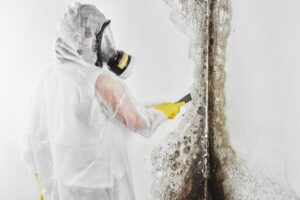Mold is an ongoing problem in Atlanta’s humid environment, thus mold removal is an essential service that many homeowners require. Mold damages the structure of a home and can affect indoor air quality if left unchecked. Knowing how the remediation process works highlights the importance of expertise and specialized tools in addressing mold problems effectively. This blog explains the steps involved in professional mold removal and why using certified professionals is key to getting back to a healthy living space.

The Mold Remediation Process
Initial Assessment and Containment
The mold removal process begins with a detailed assessment of the affected areas. Professionals use advanced tools such as moisture meters and infrared cameras to detect mold growth, even in hidden or hard-to-reach spaces. After identifying the extent of the problem, the affected area is sealed off to prevent mold spores from spreading to other parts of the home. Containment measures, such as negative air chambers, play a vital role in safeguarding the surrounding environment. This initial step lays the foundation for an effective remediation process.
Removal of Mold and Affected Materials
Mold cannot be removed by simply wiping it away. Mold removal often involves advanced techniques and equipment. The professional mold remediation process involves the use of HEPA vacuums, antimicrobial solutions, and other more advanced methods. In cases where mold has deeply infiltrated porous materials like drywall or carpeting, those materials may need to be removed and replaced. This thorough remediation makes sure that the mold is eliminated completely, preventing regrowth and further contamination.
Cleaning and Sanitization
Once the mold is removed, cleaning and sanitization are essential to restore the affected areas. High-efficiency HEPA air scrubbers are used to filter the air, removing any lingering spores. Non-porous surfaces are treated with antimicrobial solutions to eliminate any remaining contaminants. Depending on the level of exposure, furniture, clothing, and other belongings may be cleaned or discarded. This step not only restores cleanliness but also ensures the space is safe for reoccupation.
Addressing the Source of Moisture
Mold likes to grow in moist environments, so solving the moisture problem is key to long-term success. Professionals help identify and resolve water issues, whether it be a leaky plumbing system, a roof issue, or a lack of ventilation. This step keeps mold out and reduces the chance of future infestations. Moisture control also helps with the indoor air quality and protects the structural integrity of the home.
Final Inspection and Prevention Strategies
Mold removal ends with a final inspection to make sure that the mold was successfully remediated. Experts may give advice on how to prevent it in the future, such as installing dehumidifiers, improving ventilation, or scheduling regular checkups. These techniques can keep a home mold-free and provide homeowners peace of mind. Working with professionals will help make sure the mold removal process is thorough and successful, protecting both the property and the health of its occupants.
Mold Removal in Atlanta
Understanding the mold remediation process highlights the importance of professional expertise. Trained specialists bring the right tools, knowledge, and dedication to ensure homes are mold-free and safe. For residents facing a mold issue, investing in our professional remediation services here at Atlanta Restoration is a smart way to protect property, promote healthier living spaces, and achieve long-term peace of mind.